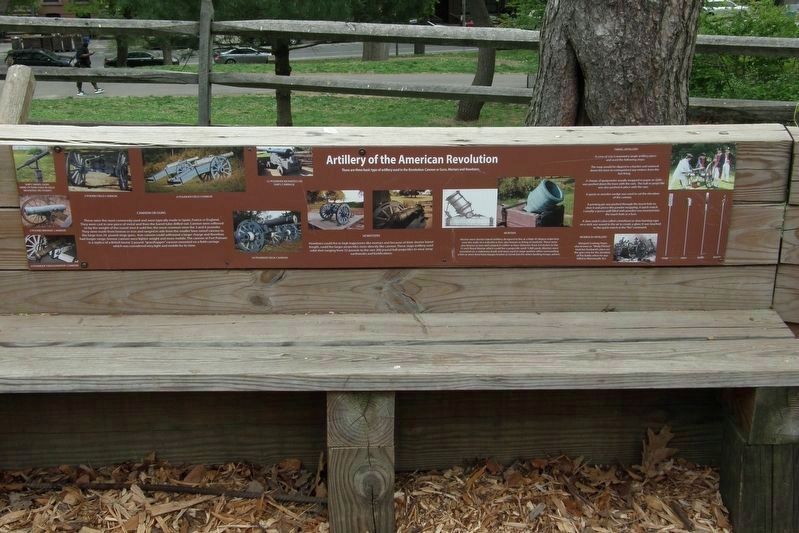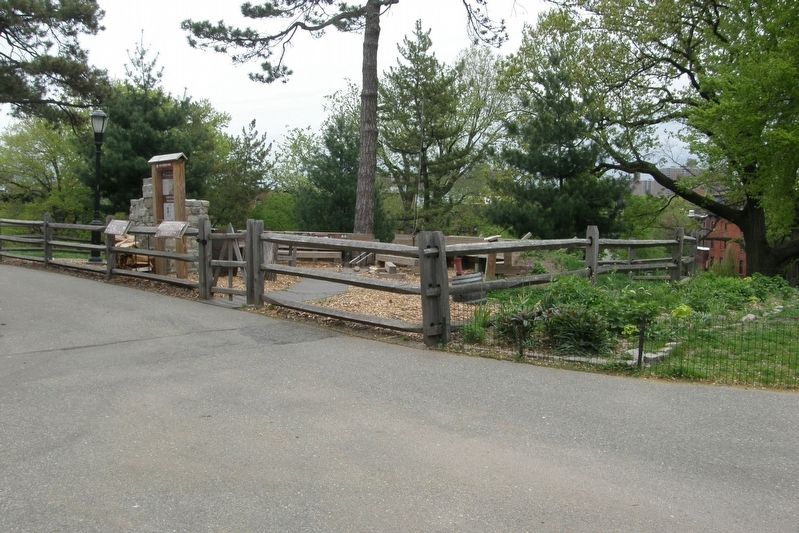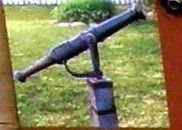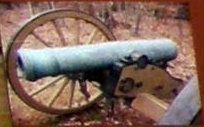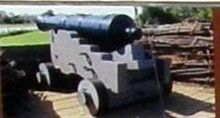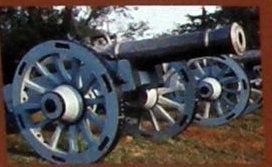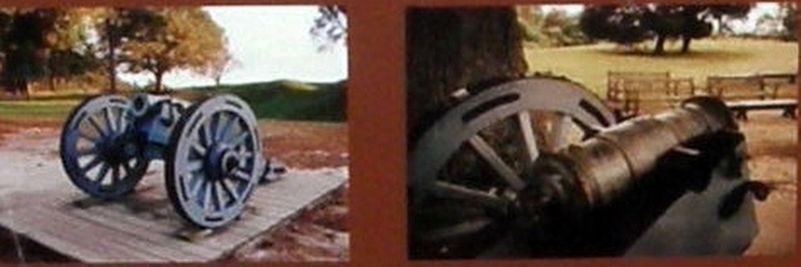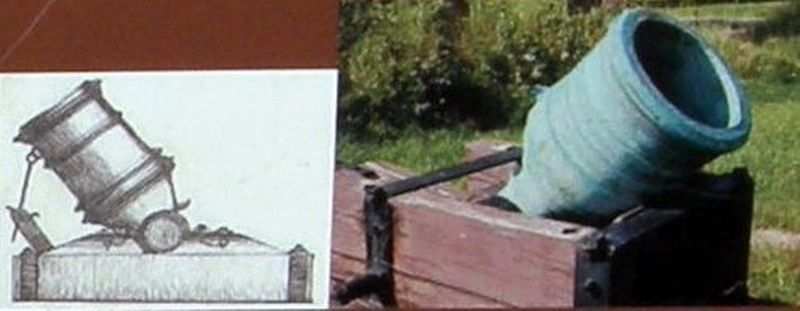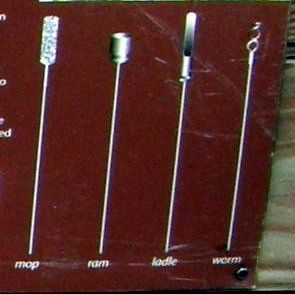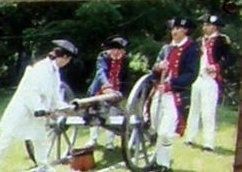Fort Greene in Brooklyn in Kings County, New York — The American Northeast (Mid-Atlantic)
Artillery of the American Revolution
Inscription.
There are three basic type of artillery used in the Revolution: Cannon or Guns, Mortars and Howitzers.
Cannon or Guns
These were the most commonly used and were typically made in Spain, France or England. They were cast in one piece of metal and then the barrel tube was drilled out. Cannon were refferred to by the weight of the round shot it ould fire; the most common were the 3 and 6 pounder. They were made from bronze or iron and ranged in size from the smaller bore swivel cannon to the large iron 24 pound siege guns. Iron cannon could withstand a larger charge and therefore had a longer range; bronze cannon were lighter weight and more mobile. The cannon at Fort Putnam is a replica of a British brone 2 pound “grasshopper” cannon mounted on a field carriage which was considered very light and mobile for its time.
Howitzers
Howitzers could fire in high trajectories like mortars and because of their shorter barrel length, could fire larger projectiles more directly like cannon. These siege artillery used solid shot ranging from 32 pounds to the rare 200 pound ball projectiles to wear away earthworks and fortifications. (sic)
Mortars
Mortars were shorter barrel artillery designed to fire at a high 45 degree trajectory over the wall of a redoubt or fort, also known as firing en barbette. These were also bronze or iron and ranged in calibre or bore diameter from 4.4 inches to the 15 inch Royal Mortar which could fire a projectile ovefr 1,000 yards. Mortars were mounted on a stationary boulk and were used in siege warfare when surrounding a fort or were fired from barges know as bomb ketches when landing troops ashore.
Firing Artillery
A crew of 3 to 5 manned a single artillery piece and used the following steps:
The mop would be dipped in a bucket and rammed down the bore to extinguished any embers from the last firing
A charge of gunpowder usually wrapped in paper or cloth was pushed down the bore with the ram.
A quoin or wooden wedge was used to set the elevation of the cannon.
A priming pin was pushed through the tough hole to clear it and pierce the powder wrapping. A quick match (usually a goose quill filled with powder) was inserted into the touch hole as a fuse.
A slow match (also called a botefeux) or slow burning rope on a stick was waved in the air to create a glow; it was touched to the quick match at the “fire” command.
Women in Artillery
Margaret Ludwig Hayes also known as “Molly Pitcher” took her husband’s place on the gun crew for the duration of the battle when he was killed in Monmouth, N.J.
Topics. This historical marker is listed in this topic list:
War, US Revolutionary.
Location. 40° 41.531′ N, 73° 58.477′ W. Marker is in Brooklyn, New York, in Kings County. It is in Fort Greene. Marker can be reached from Washington Park. The marker is within the redoubt display by the Fort Greene Park Visitor Center. Touch for map. Marker is in this post office area: Brooklyn NY 11205, United States of America. Touch for directions.
Other nearby markers. At least 8 other markers are within walking distance of this marker. Artillery Projectiles of the American Revolution (here, next to this marker); African American Heroes of the American Revolution (here, next to this marker); What is a Redoubt Anyway? (here, next to this marker); Fort Greene Park (a few steps from this marker); Ginkgo (a few steps from this marker); Delafield Cannon (a few steps from this marker); On the Occasion of the Bicentennial of the United States of America (within shouting distance of this marker); Prison Ship Martyrs Monument (within shouting distance of this marker). Touch for a list and map of all markers in Brooklyn.
Regarding Artillery of the American Revolution. "Molly Pitcher" is buried at the Old Graveyard in Carlisle, PA. Click on the "Related marker" link below.
Related marker. Click here for another marker that is related to this marker.
Credits. This page was last revised on January 31, 2023. It was originally submitted on November 20, 2018, by Larry Gertner of New York, New York. This page has been viewed 443 times since then and 31 times this year. Photos: 1, 2, 3, 4. submitted on November 20, 2018, by Larry Gertner of New York, New York. 5, 6, 7. submitted on November 26, 2018, by Larry Gertner of New York, New York. 8, 9, 10. submitted on December 11, 2018, by Larry Gertner of New York, New York. 11. submitted on December 30, 2018, by Larry Gertner of New York, New York. • Bill Pfingsten was the editor who published this page.
